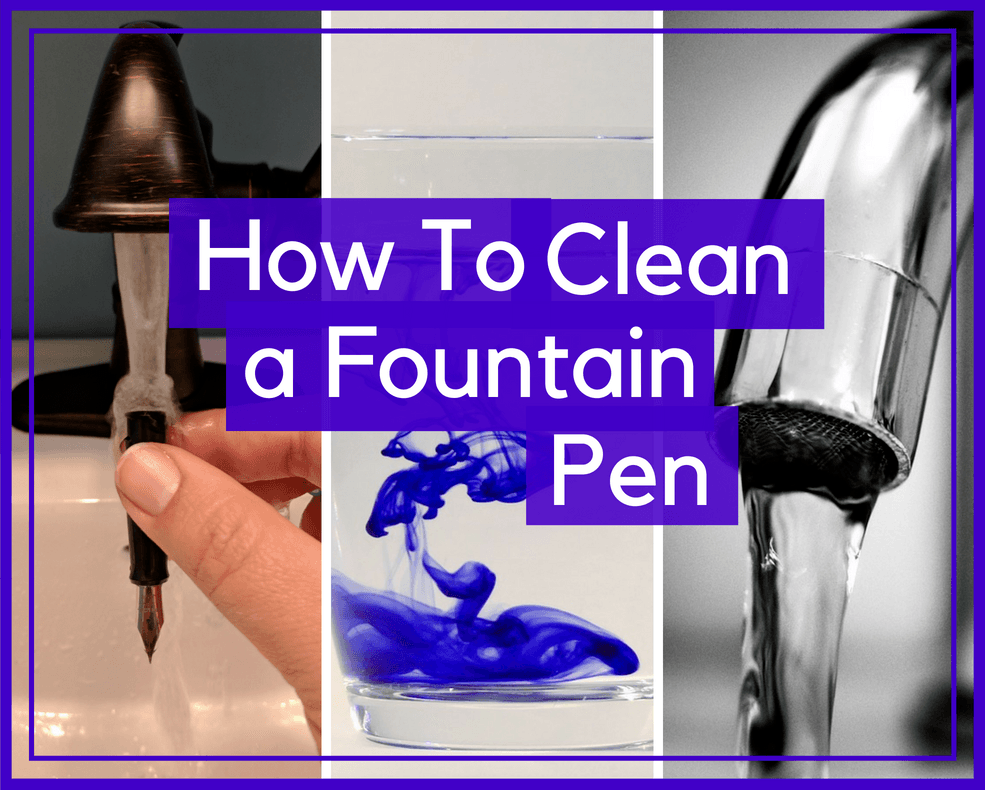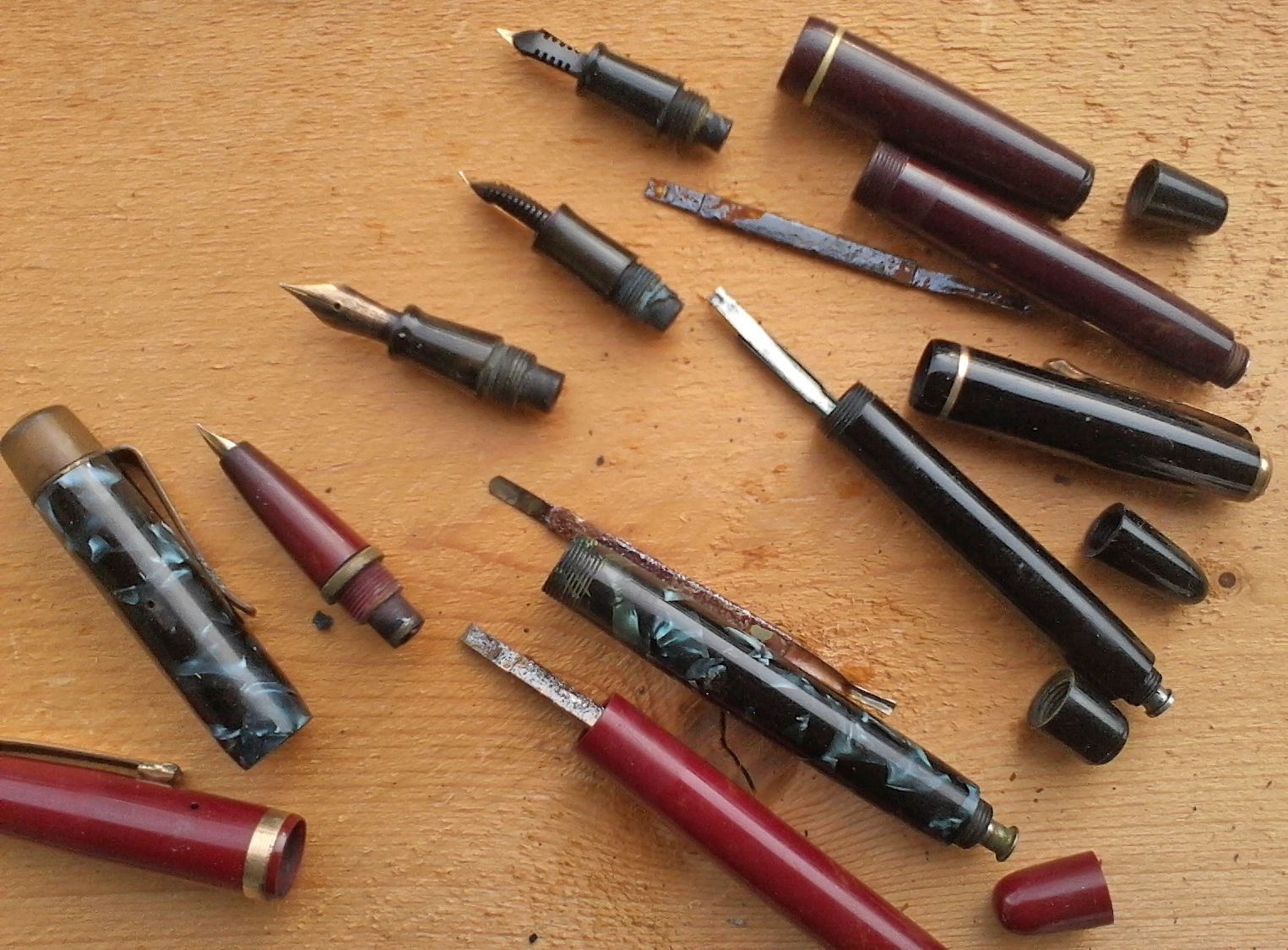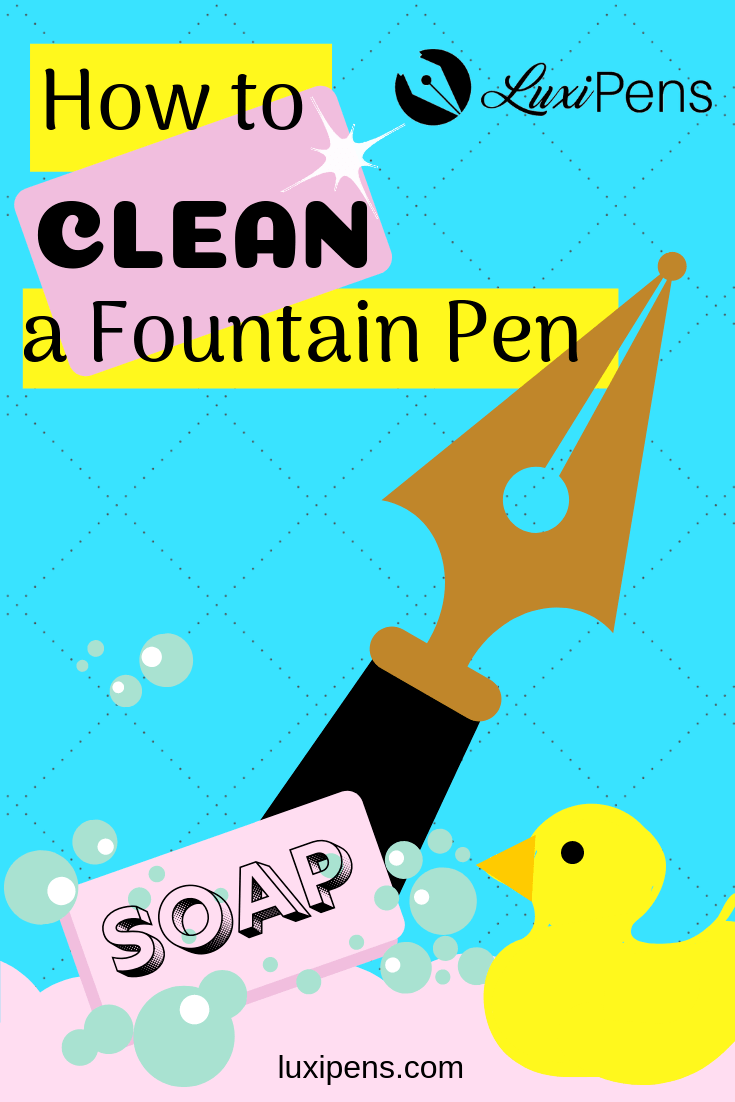How to Clean a Fountain Pen
A fountain pen is a wonderful tool, but it must be cared for in order to work properly. Cleaning a fountain pen regularly will ensure the pen’s longevity and a lifetime of use and enjoyment.
While there are several types of fountain pens, the cleaning process is essentially the same across all fountain pens. The very basics of cleaning fountain pens are:
- 1Empty the pen of ink.
- 2Disassemble the pen and separate the nib and feed from the rest of the pen. Soak the nib and feed in clean, tepid water, and gently place it upside down on a paper towel to dry.
- 3Flush the barrel of the pen with tepid water until it runs clear.
- 4Allow the pen and nib to dry completely before reassembling and filling with ink.
- 5Clean each pen on a regular schedule - ideally, a fountain pen used regularly should be cleaned once a week, but at minimum must be cleaned once a month.
Below, this article describes how to clean the most common types of fountain pens in detail. We have also provided special instructions for cleaning fountain pen nibs. At the end of the article, we cover solutions to some common fountain pen problems that can be cured with a good cleaning!
Gather the appropriate equipment and prepare a workspace. Clear a table or desk and lay down some newspaper or a clean, thin dish towel. Turn on a bright light and set out small dishes or cups in which small parts can be temporarily corralled. Gather the equipment listed below.
This post contains affiliate links. See our disclosure page for more information.
Equipment
Item | Function |
|---|---|
Water | Clean, room temperature water |
Cotton swabs | Cotton swabs are useful in applying silicone grease as needed, as well as to remove ink buildup in the body of the pen. |
Thin dish towels or paper towels | Clean, soft dish towels (such as flour sack towels) or microfiber cloths are the best choice for cleaning fountain pens since they don’t leave behind any fibers that may jam up the inner workings of a pen. Paper towels are also acceptable, but be careful when using paper towels with the nib of a fountain pen, as the rough paper towel may scratch the nib. |
Pen flush (optional) | For deep cleaning, fountain pen flush is recommended in addition to water to fully remove dried ink. Ready-made pen flush (like this one) is available for purchase online. Pen flush can also be made by mixing 1 part household ammonia with 10 parts water. When using pen flush of any kind, be sure to thoroughly rinse the pen with water afterwards to ensure that no pen flush remains in or on the pen. NOTE: Do not use ammonia in a pen that contains aluminum parts. |
Bulb syringe | This tool can be purchased at any drug store, usually in the baby needs or pharmacy department. Bulb syringes force water or pen flush through hard-to-reach inner parts of the fountain pen in order to flush it of all ink buildup. |
Bowls | Shallow, wide mouth |
Cleaning a Fountain Pen by Type
Below are detailed instructions for cleaning the four most common types of fountain pens, including an eyedropper pen, a cartridge/converter pen, a piston pen, and a vacuum filler pen. At the end of this portion of the article, there is a special section on cleaning fountain pen nibs that applies to all four fountain pen types. Fountain pen nibs require particular care to properly function, so be sure to follow those instructions carefully.
How to Clean an Eyedropper Fountain Pen
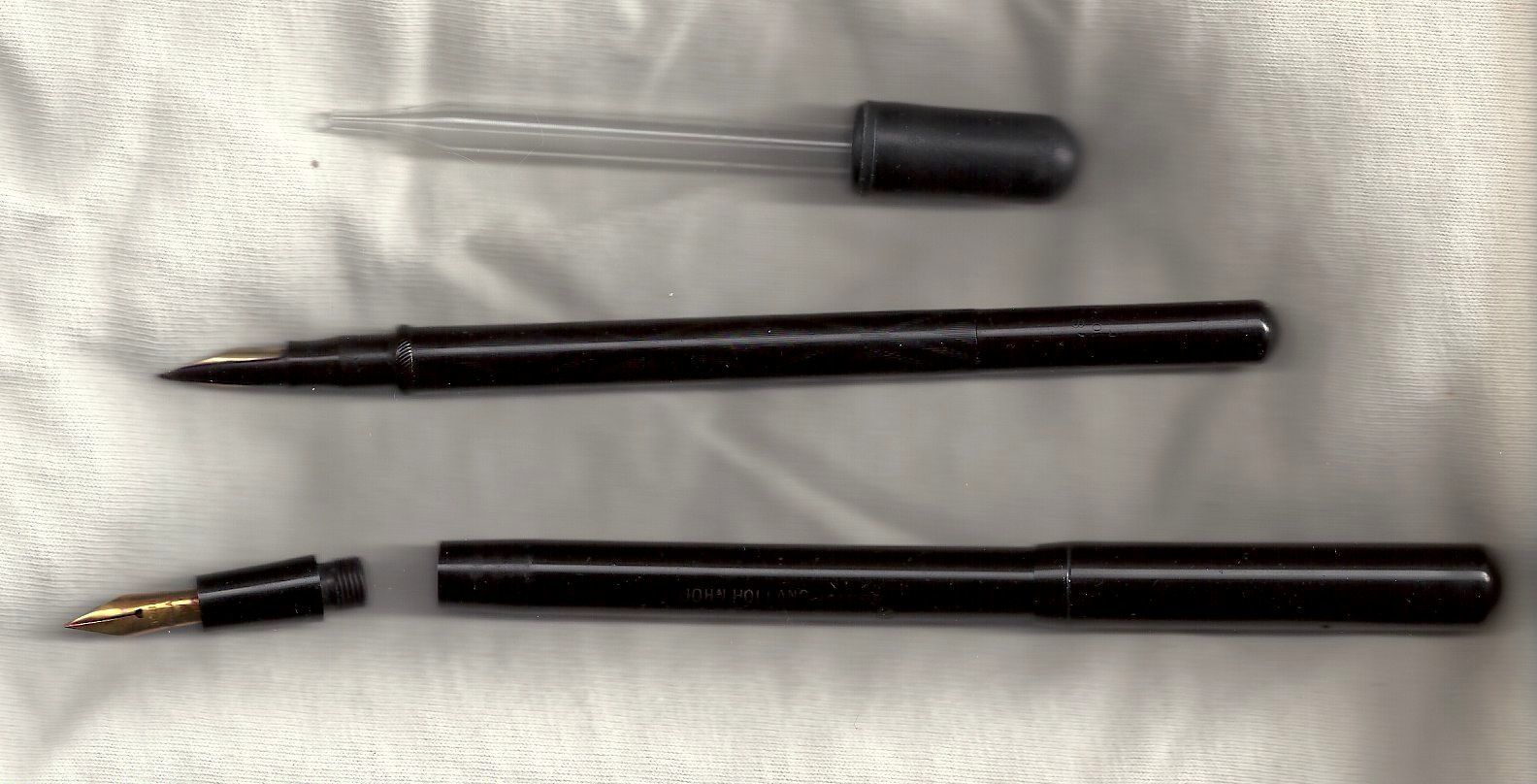
Image of John Holland eyedropper pens, courtesy of Charles Barilleaux
An eyedropper fountain pen is the simplest fountain pen to use, and accordingly, is the simplest fountain pen to clean. First, unscrew the nib from the barrel of the pen. Empty the ink from the barrel, and thoroughly rinse out the barrel with tepid water. Clean the nib according to the instructions given at the end of this section.
If there is dried ink in the barrel, allow the barrel to soak in warm water for an hour or two. Next, use a bulb syringe to gently force warm water or pen flush into the barrel. After cleaning the barrel, allow it to dry completely on a soft dish towel or paper towel before reassembling and filling the pen.
How to Clean a Cartridge/Converter Fountain Pen
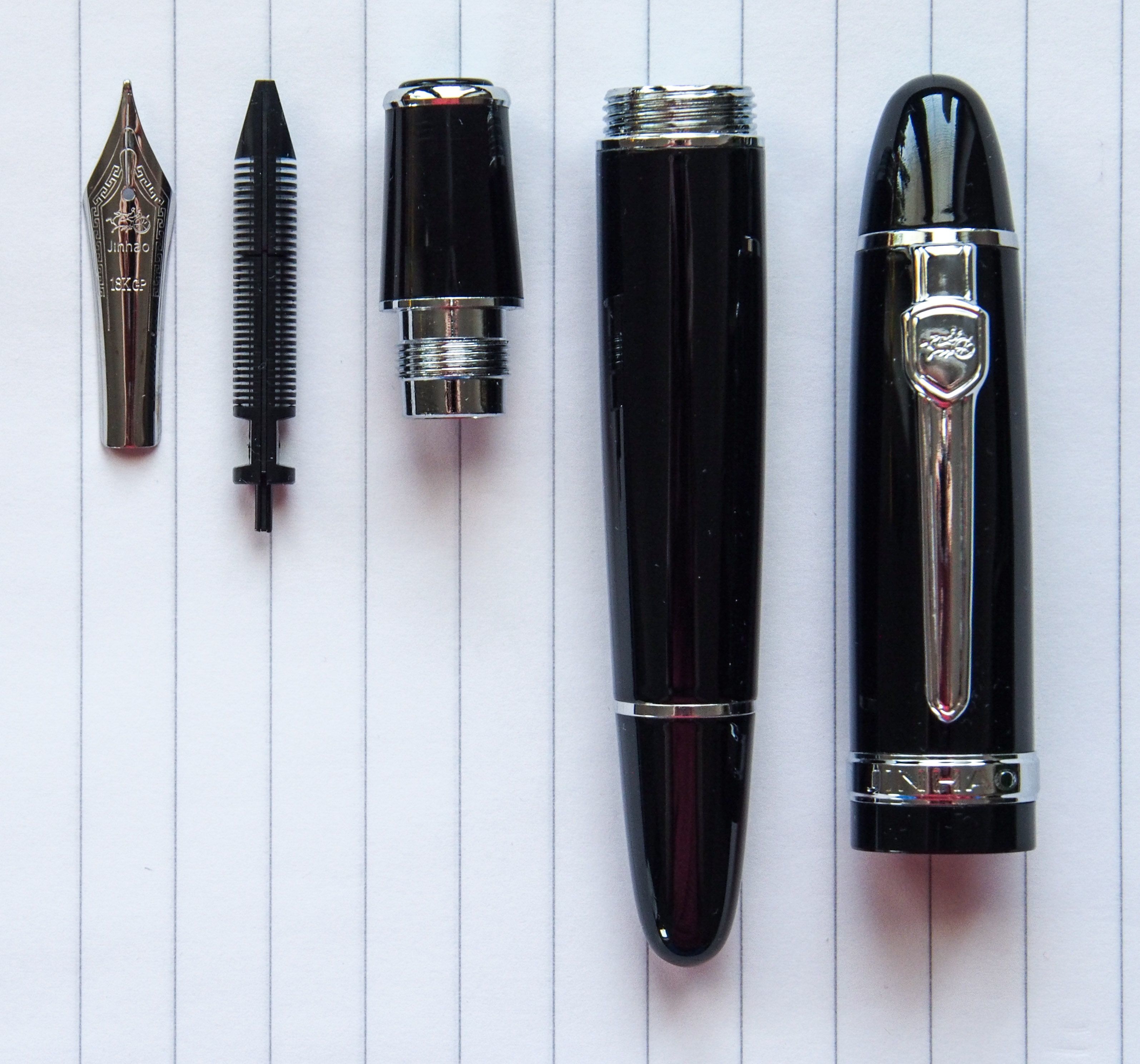
Image of a disassembled Jinhao 159 fountain pen, courtesy of Pavel Satrapa
Begin by disassembling the pen. Unscrew the grip section of the fountain pen from the barrel.
- 1If the pen has a cartridge, remove the cartridge from the nib and set aside, holding the cartridge upright so that any remaining ink doesn’t spill. To ensure ink doesn’t dry out while cleaning, seal the cartridge with a piece of tape. Clean the nib according to the instructions at the end of this section of the article.
- 2If the pen has a converter, flush water through the converter until the water runs clear. If ink remains in the converter, soak the converter in tepid water for at least one hour and gently flush with pen flush to loosen any dried ink.
- 3Rinse the barrel of the pen with tepid water and allow to dry completely before reassembling the pen.
How to Clean a Piston Fountain Pen
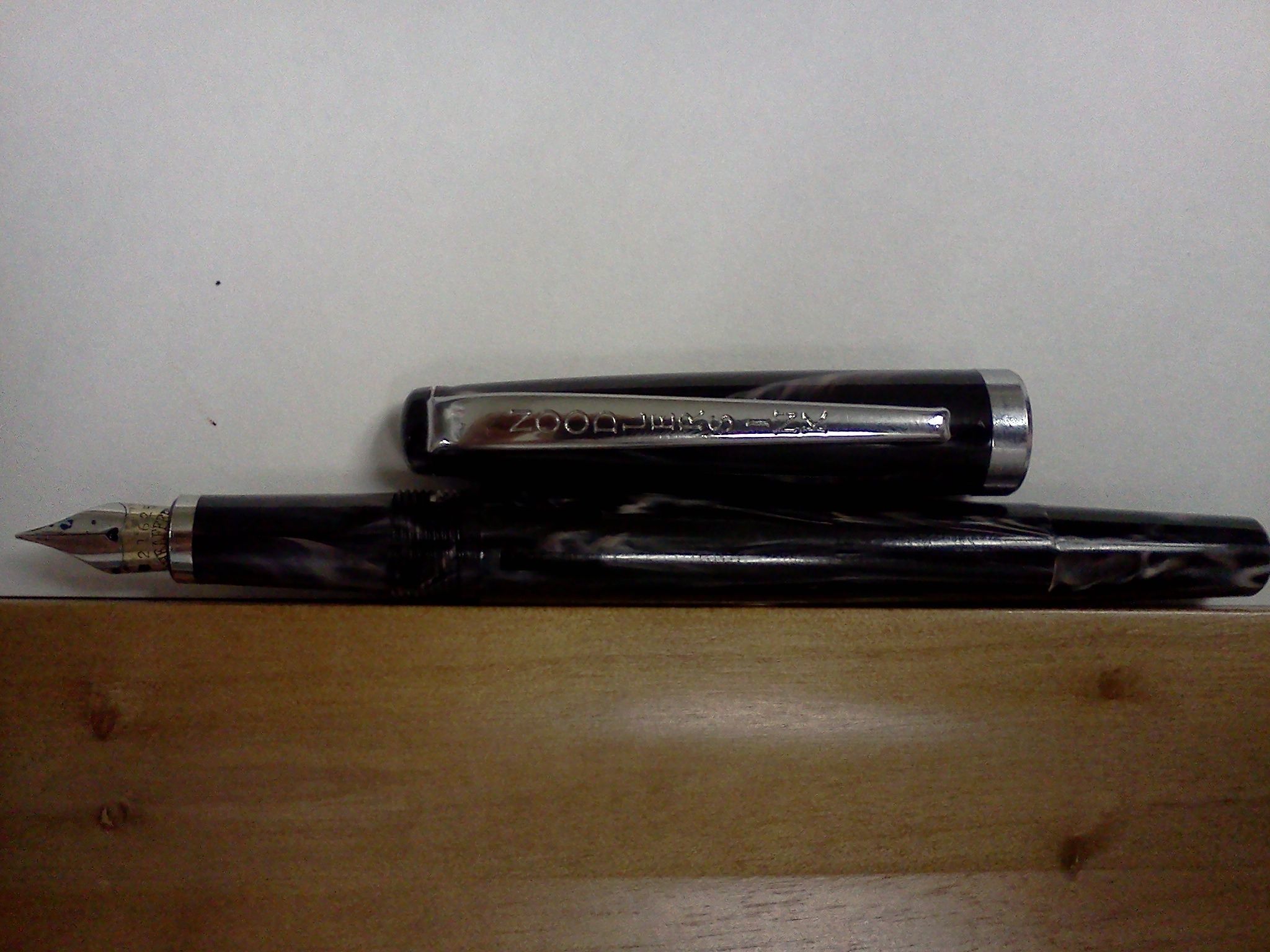
Image of a modern piston fill fountain pen with a vintage nib, courtesy of Douglas G. Turner II
To clean a piston fountain pen, first hold the pen over an empty container and turn the piston of the pen to expel as much ink as possible.
Set two shallow bowls on the work table. Fill one with tepid water and insert the pen nib into it. Fill the pen with clean water and empty it into the other bowl using the piston mechanism. Repeat this process until the water runs clear. Replace the water as needed when it becomes too saturated with ink.
Carefully flick the pen to remove excess water. Use the piston mechanism to remove as much water as possible from the pen. Allow the pen to dry completely before refilling – this may take several hours, and may take as long as 24 hours, but is very important to ensure that the fountain pen works properly when refilled. If the pen is not completely dry when filled with ink, the ink may run thin and watery, producing a sub-par writing experience.To clean a vacuum filler fountain pen, first empty the ink out of the pen. Set two shallow bowls on the work table and fill one with clean, tepid water.
Pull out the pen plunger, insert the nib of the pen into the bowl of clean water, and plunge. Gently shake the pen to agitate the water against the barrel walls, and empty the water from the pen into the empty bowl.
Repeat this process until the water coming out of the pen runs clear. Allow the pen to dry completely before refilling with ink.
How to Clean a Fountain Pen Nib
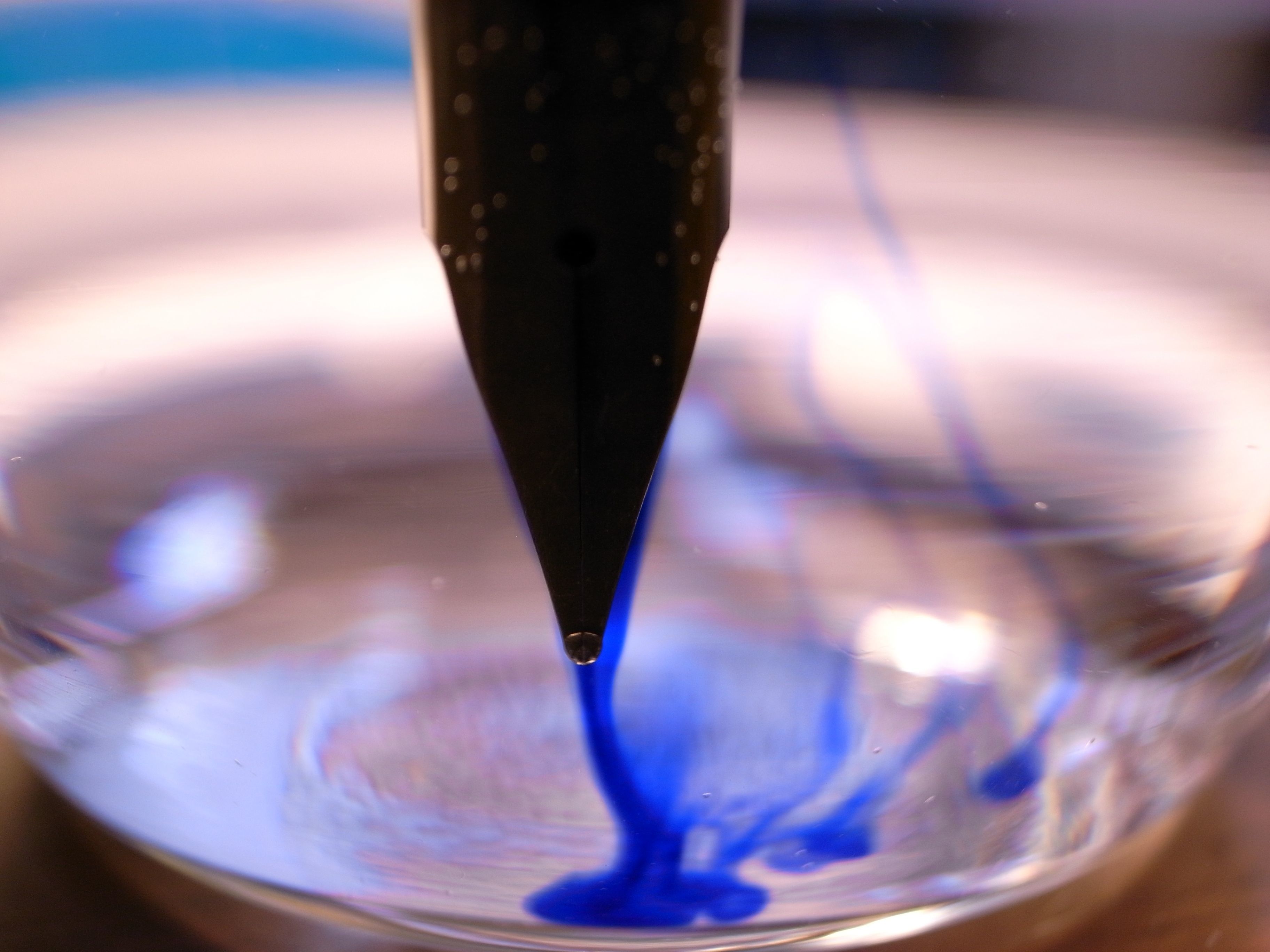
Image of a fountain pen nib in a glass of water, courtesy of bizmac
This section discusses cleaning the nib of a fountain pen. Take special care when cleaning a pen nib so that it doesn’t become damaged in the process. In accordance with the instructions above, the nib section of the pen should already be removed from the barrel, emptied of ink, and separated from the cartridge or converter (if applicable.)
First, hold the nib section of the pen under a running tap of tepid water for 20 to 30 seconds. This gives the water time to wash away excess ink from the nib.
Once the water runs clear, place the nib in a wide, shallow bowl of lukewarm water and soak for 10 minutes. If the nib still has some ink stuck inside after soaking, use a bulb syringe to force water gently through the nib section from the back and out the nib tip. Repeat until all ink has been loosened and expelled from the pen.
After cleaning, fold a small microfiber or paper towel in the bottom of a drinking glass or mug and carefully rest the pen nib upside down in the glass. Allow the nib to dry for at least 20 minutes before reassembling. Do not wipe the nib with a cloth unless that cloth has been made specifically for fountain pen nib care.Fountain Pen Troubleshooting
If a pen has a problem that isn’t resolved through routine cleaning, the situation may require a more thorough cleaning process. This section should help identify and troubleshoot these problems.
Fountain Pen Skipping
If a fountain pen begins to skip strokes when writing, then there is not enough ink being supplied to the nib. This problem is most commonly caused by dried ink or debris in the feed chamber that is blocking the flow of ink. A fountain pen whose ink is not flowing needs to be thoroughly cleaned, dried and re-inked.
To fix this problem, disassemble the pen, soak the nib and feed, and flush the pen with water or pen flush until the water runs clear. If this is a recurring problem, use a thinner, self-lubricating ink d. Consult the pen manufacturer to obtain information on recommended self-lubricating inks.
Another issue that may cause a fountain pen to be scratchy is a misaligned nib. A fountain pen repair technician can realign the pen nib and repair the fountain pen.
To thoroughly cleanse a fountain pen, use fountain pen cleaning solution, also called fountain pen flush. A commonly used fountain pen cleaning solution recipe is 1 part household ammonia to 10 parts water. Fountain pen cleaning solution can also be purchased through a pen supplier.Sticky Pistons or Converters
If a pen piston is difficult to move, lubricating the piston mechanism with silicone grease may correct the problem. Silicone grease is available at many hardware stores, and toothpicks or sewing pins for application in tight inner spaces of the pen.
For pens with removable nib units, pull the piston back, remove the nib, apply grease to the barrel walls near the piston seal with a pin or toothpick, and move the pin in and out to lubricate.
Some pen converters must be disassembled in order to be properly lubricated. Consult the pen manufacturer instructions to disassemble a pen converter. After disassembly, use a pin or toothpick to apply grease to the sides of the piston. Reassemble according to manufacturer instructions and move the piston in and out to lubricate.
How to Clean a Fountain Pen with Dried Ink
Occasionally, a pen may be left unused for some time with ink still inside. Because fountain pen ink is water based, the water in the ink will eventually evaporate and leave dry, flaky ink deposits that are difficult to clean.
To clean the pen, disassemble it and submerge the parts in lukewarm water for a few hours and up to overnight. After soaking, discard the used water and use a bulb syringe to gently force clean, tepid water or pen flush through the feed section of the pen, as well as into the barrel of the pen, until clean. Dry the nib as described above. Once the pen is dry, reassemble it and fill with ink.
To increase the lifespan of a pen, clean fountain pens regularly. Whether pens are cleaned once a month or once a week, fountain pens last longer and are more enjoyable to use when their owners practice routine fountain pen care.
A fountain pen should be stored with its cap on to prevent the ink from drying out. Store pens upright in a pen holder or cup to prevent the ink from collecting and drying in the pen nib. Pen cases are intended to store pens that have been completely emptied and cleaned of ink; never store filled pens in a pen case.
For infrequently used pens, remove ink and clean pens after each use. Similarly, if any pen will be stored for more than a week, remove ink and clean and dry the pen thoroughly before storage. It is very important that the pen and nib are allowed to dry completely before they are stored.
For more detailed information on fountain pen storage, read our article:
“How to Store a Fountain Pen”

